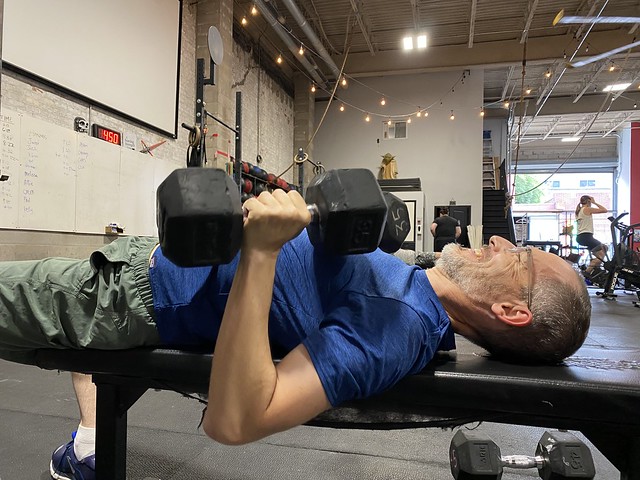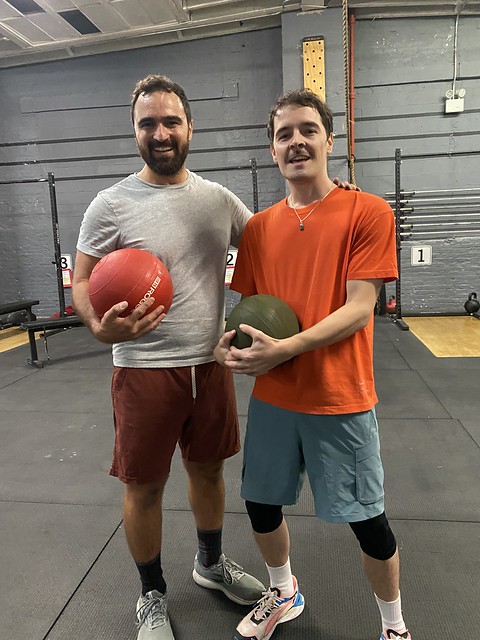Workout of the Day
STRENGTH
Chin-Ups
3-3-3-3-3
Notes
For the chin-ups, work up to a challenging 3 rep set. Here are 4 versions of this going from hardest to most accessible. For all version use a controlled tempo and full range of motion.
a. Weighted Chin-Ups
b. Strict Chin-Ups
c. Partner assist up + DIY Negative
d. Banded
METCON
50-40-30-20-10 Reps of:
Dumbbell Deadlift
Sit-Ups
Notes
There is a 15:00 cap on this workout. Prioritize your your back position with the deadlifts. If you can’t tap the floor with the front head of the dumbbell while keeping back in extension, decrease your ROM accordingly.
DLs: 50/35/20
Sit-Ups may be anchored using your Dumbbells, or not.
CrossFit Group Class Programming Template (WK5/6)

Welcome recent Foundations grads Cameron, AJ, Gretchen and Krista!
See Gus’ Play!!

Photo by Maria Baranova
Gus (from the front desk) is the founding director of i am a slow tide and is currently in rehearsal, directing his company’s next production. The Gold Room is i am a slow tide’s follow up to their critically acclaimed debut of Agnes Borinsky’s Brief Chronicle: Books 6-8.
The show runs October 14-November 5 at HERE Arts Center (145 6th Avenue). Performances are Wednesday through Saturday at 7pm and Sundays at 2pm. The show will run around 60 minutes. The show is definitely rated R and is not recommended for folks under 18, so keep that in mind when making plans to come! Bring your squat buddy with you!
Tickets are on sale now @ slowtide.info









